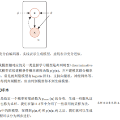Accurate and fast simulation of particle physics processes is crucial for the high-energy physics community. Simulating particle interactions with detectors is both time consuming and computationally expensive. With the proton-proton collision energy of 13 TeV, the Large Hadron Collider is uniquely positioned to detect and measure the rare phenomena that can shape our knowledge of new interactions. The High-Luminosity Large Hadron Collider (HL-LHC) upgrade will put a significant strain on the computing infrastructure due to increased event rate and levels of pile-up. Simulation of high-energy physics collisions needs to be significantly faster without sacrificing the physics accuracy. Machine learning approaches can offer faster solutions, while maintaining a high level of fidelity. We discuss a graph generative model that provides effective reconstruction of LHC events, paving the way for full detector level fast simulation for HL-LHC.
翻译:粒子物理过程的精确和快速模拟对于高能物理界至关重要。 模拟粒子与探测器的相互作用既耗时又费钱。 质子-质子碰撞能量为13 TeV,大型强子相撞机在探测和测量能影响我们对新相互作用的了解的稀有现象方面处于独特的地位。 高液态大型强子相撞机(HL-LHC)的升级将因事件率和堆积水平的增加而给计算基础设施带来巨大压力。 模拟高能物理碰撞需要大大加快速度,同时又不牺牲物理精确度。 机器学习方法可以提供更快的解决方案,同时保持高度的忠诚性。 我们讨论一个可有效重建LHC事件的图形化模型,为HL-LHC全面检测或水平快速模拟铺平道路。





